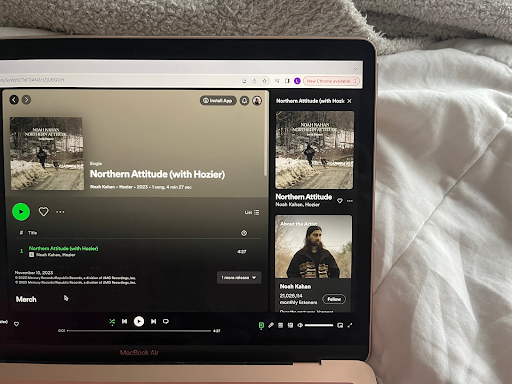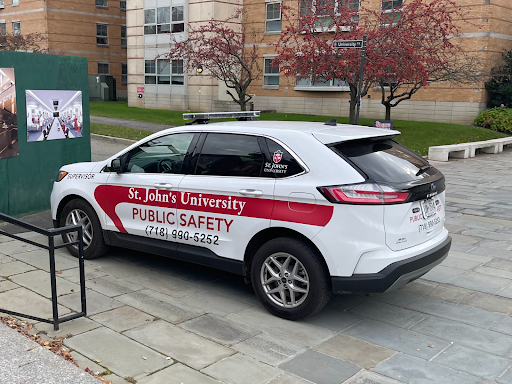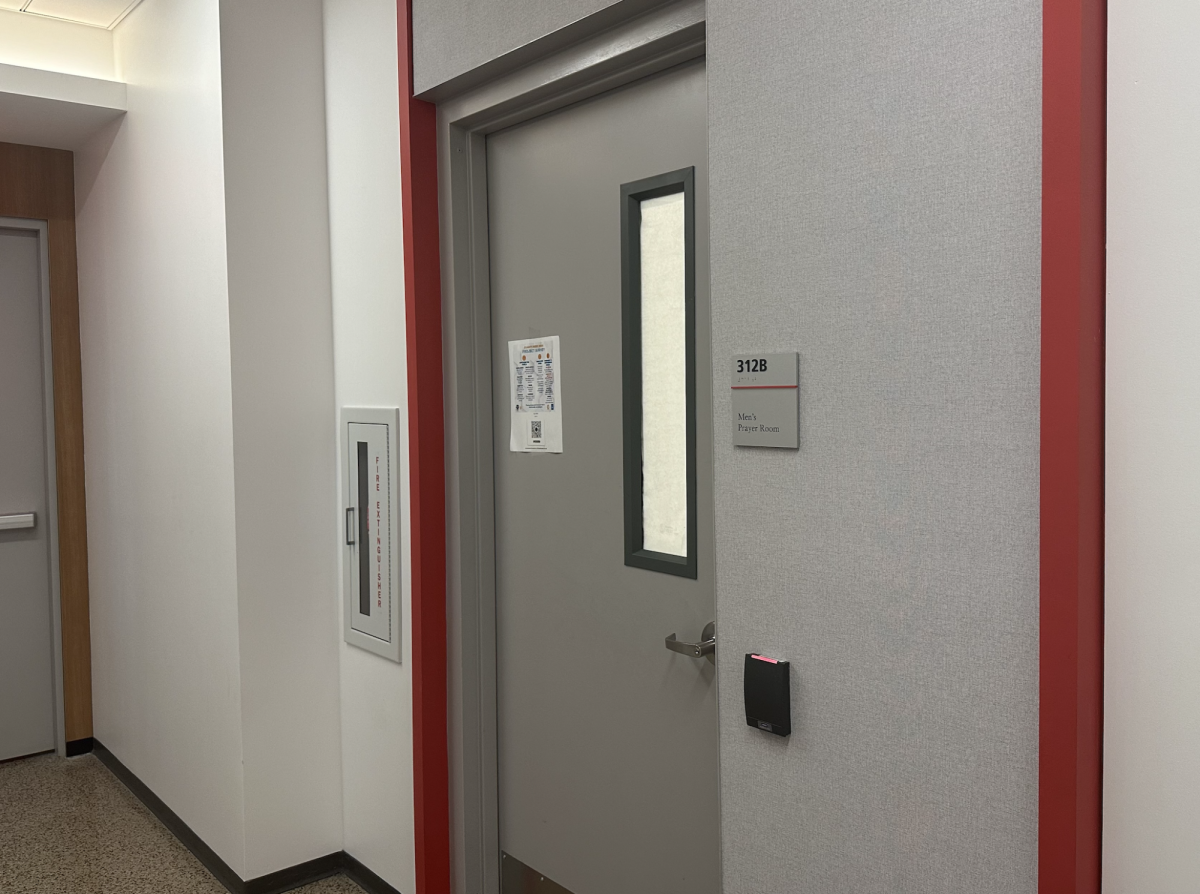There is now a formally recognized LGBTQ group at St. John’s. It’s called Spectrum, and they say they intend to focus on inclusiveness, increasing awareness and their four pillars of support, education, service and faith.
Although the Spectrum group itself has been two years in the making, the push for a LGBTQ group on campus started 20 years ago, according to one of the co-presidents, Mairead Carr.
The creation of Spectrum is a University-wide initiative, according to the four co-presidents, Carr, Oscar Diaz, Melanie August and Aarika Miller.
According to Carr, the birth of the Spectrum initiative can be traced to February 2012 when a petition with 1,400 signatures was presented to administrators. Both Carr and Diaz said that there’s been a noticeable gap when it comes to presence and visibility of the LGBTQ community at St. John’s, and Spectrum plans to make that gap disappear.
“We are moving in a great direction,” Carr said. Carr is an ally within the group, and she emphasized that Spectrum’s focus is inclusion of everyone. An ally is a friend of an LGBTQ group that doesn’t identify, but provides support to its members.
The word ‘spectrum’ was chosen because it represents the entire spectrum of sexuality, gender and expression — and the wide array of diversity that exists at St. John’s, according to Diaz and Carr.
Spectrum’s logo is meant to represent that range of diversity, and includes different shapes and colors meant to represent different types of people.
“We also used the pink triangle, a symbol of strength in the [LGBTQ] community both historically and culturally, and included a missing piece as well, meant to represent the open void that can be filled by anyone, including allies,” Diaz said.
Spectrum came about after increased student interest, but also involved the help of faculty members. The group has worked closely with administrators, such as Dean of Students Dr. Daniel Trujillo, as well as the Global Studies, Student Wellness and Campus Ministry departments, according to Diaz and Carr.
Spectrum is not an SGI group as of now, but will have floor representation at SGI meetings, according to Trujillo. Their budget currently comes from Trujillo’s department, the Division of Student Affairs.
The pillars that Spectrum has created are support, education, service and faith. Each pillar utilizes the help of a faculty advisor, and provides leadership roles for students.
The support pillar focuses on the expansion of the university’s ‘How You Doin’’ and ‘SafeZone’ programs.
Spectrum intends to enhance the SafeZone program by creating awareness and letting students and faculty know that it is a safe space for discussion of any topic. “It’s a loving and caring and kind space,” August said, “and we want to make faculty aware of what we have to offer.”
SafeZone will also feature enhanced sensitivity training for both students and faculty, whereas previously only a few faculty members received the training, according to Diaz.
SafeZone has been the source for faculty training since its beginning, but Spectrum plans to enhance the program by updating and expanding it. They are working with Hannah Stravers, Assistant Director of Wellness and Violence Prevention, to create lessons for both incoming students and more faculty members, according to Diaz, Carr and Spectrum member Jake Traugott.
Traugott said, “We have partnered with [Stravers] because she is trying to re-structure the sensitivity training for both students and professors. She is focusing on pronoun usage, and improving the ways in which people interact with LGBTQ students in that regard.”
The co-presidents all agreed that faculty awareness is important because in some cases, they may be the first person that a student approaches for help. They can then direct students to Spectrum, where they can feel safe sharing whatever they need to share. The group wants to make sure that prejudice does not get in the way of student awareness of the resources offered to them.
“We need to be visible,” Miller said, “and we need to be known as a safe space.”
Both Diaz and Trujillo said that Spectrum also plans on continuing to work with the How You Doin’ group, which was created years ago with the help of Campus Ministry, namely Pamela Shea-Byrnes, who passed away suddenly last year.
The education pillar focuses on educating the St. John’s community by tackling prejudice and stereotypes and creating awareness of the LGBTQ community. Spectrum plans to collaborate with organizations on campus such as Haraya. “We want to promote intersectionality between groups, because all movements in equality are connected,” Diaz said.
Members of Spectrum consider Haraya to be another safe space, and they are trying to work together to bring awareness to the forefront. “We are excited to work with Haraya and bring out awareness about certain issues,” Carr said.
Diaz said that other student groups have welcomed Spectrum with open arms. “The reception has been great. Several groups have reached out and we were at the activities fair for the first time this year, our BBQ was the first event we held [as an organization] and we have 150 names in support [of the group]. It’s comforting to know that other organizations want to work with us, and work to diminish phobias, actively work to create a good environment, and collaborate with events to help create solidarity,” Diaz said.
Spectrum will focus on their service pillar, with the guidance of Campus Ministry, through participation in various projects including University Service Day. Diaz explained that the group aims to include the University’s Vincentian values in their service pillar by giving back to others and focusing on homeless youth in New York City, working with Covenant House, and participating in World AIDS Day.
As part of their faith pillar, the group will also work to cooperate with faith groups on campus, and work to “bridge the gap and build understanding,” according to Diaz.
Despite the overwhelming support Spectrum has gotten, they had to deal with logistical problems last year before becoming an official group. According to Carr, the election of an interim president, Fr. Levesque, held up the process. “It held us up a year, but it was only because we didn’t want to affect the higher administration during that time,” Carr said.
Yet a year of waiting was advantageous to the group. According to the co-presidents, Trujillo gave them the help they needed and let them take their time to establish themselves. Group members also became motivated to continue moving forward after hearing comments from Pope Francis and Archbishop Timothy Dolan of New York, who both made statements encouraging acceptance of the LGBTQ community within the Catholic Church.
St. John’s elected a new president, Dr. Conrado Gempesaw, which also gave the group an opportunity to start fresh with a new administration.
Spectrum will continue to move forward as a new group on campus with widespread support. “We are definitely moving in the right direction with the community as a whole, including alumni. St. John’s supports us,” Diaz said.
August made sure to emphasize the fact that Spectrum’s main focus is visibility, the four pillars, and creation of a safe space. “We want to make sure the University is that safe space for the whole community,” August said.
Trujillo is proud of the support that Spectrum has received, and he said, “St. John’s is all about being a welcoming community, where we support and take care of one another. It’s at the heart of our Catholic and Vincentian ideas. The statements made by Pope Francis and Cardinal Dolan meant a great deal and they were consistent with the idea of a caring community. I hope this community continues to grow in the future.”














